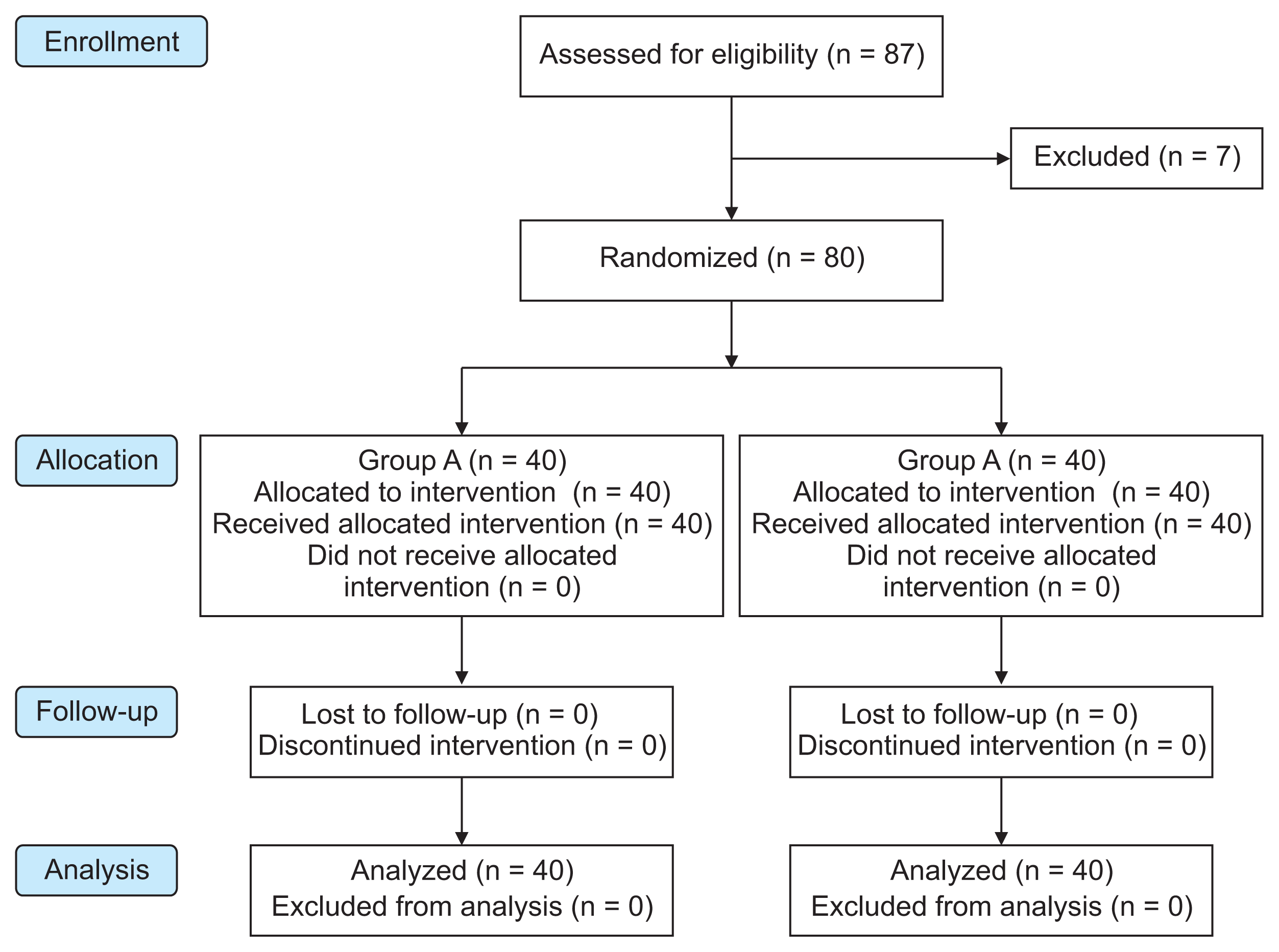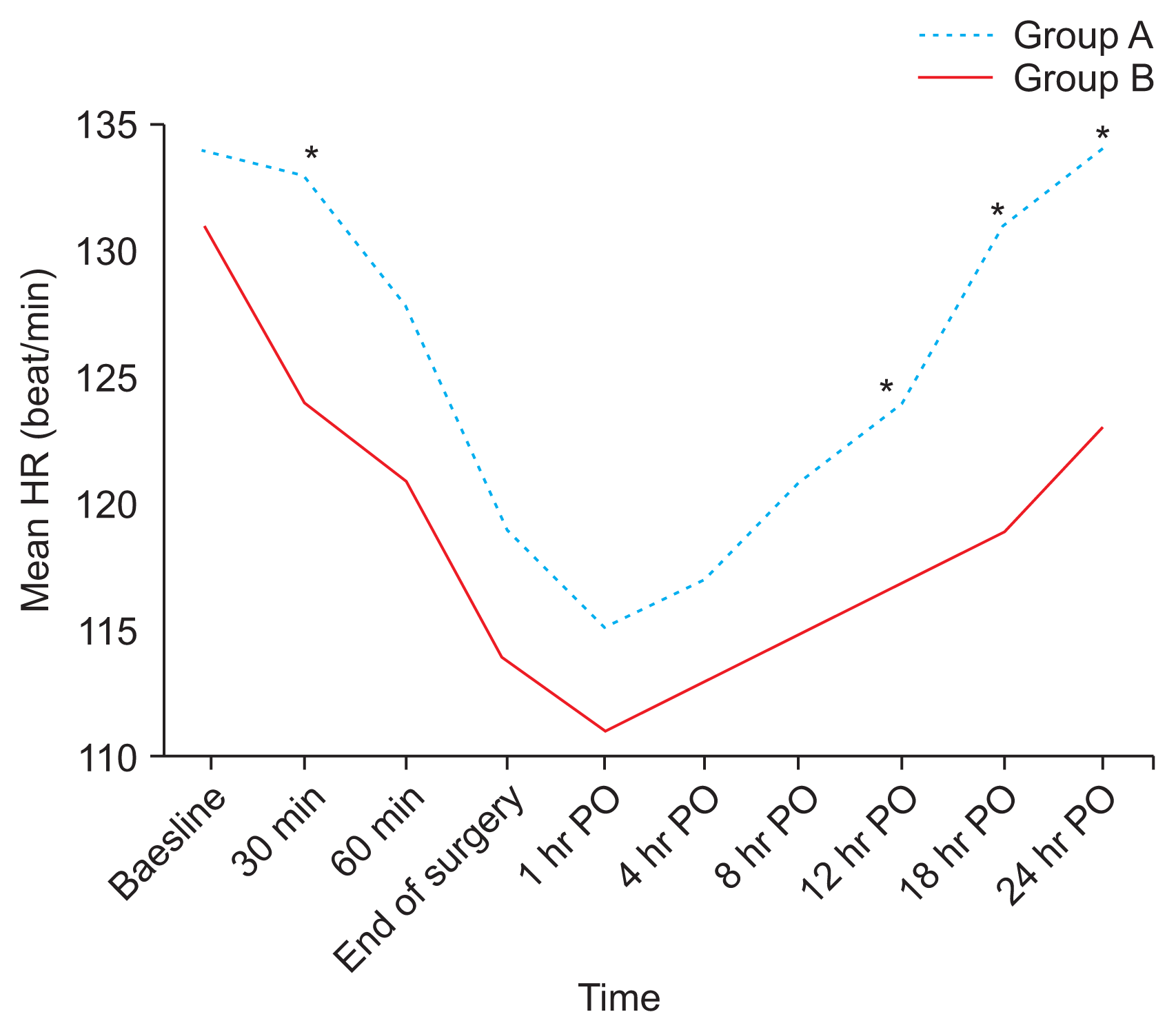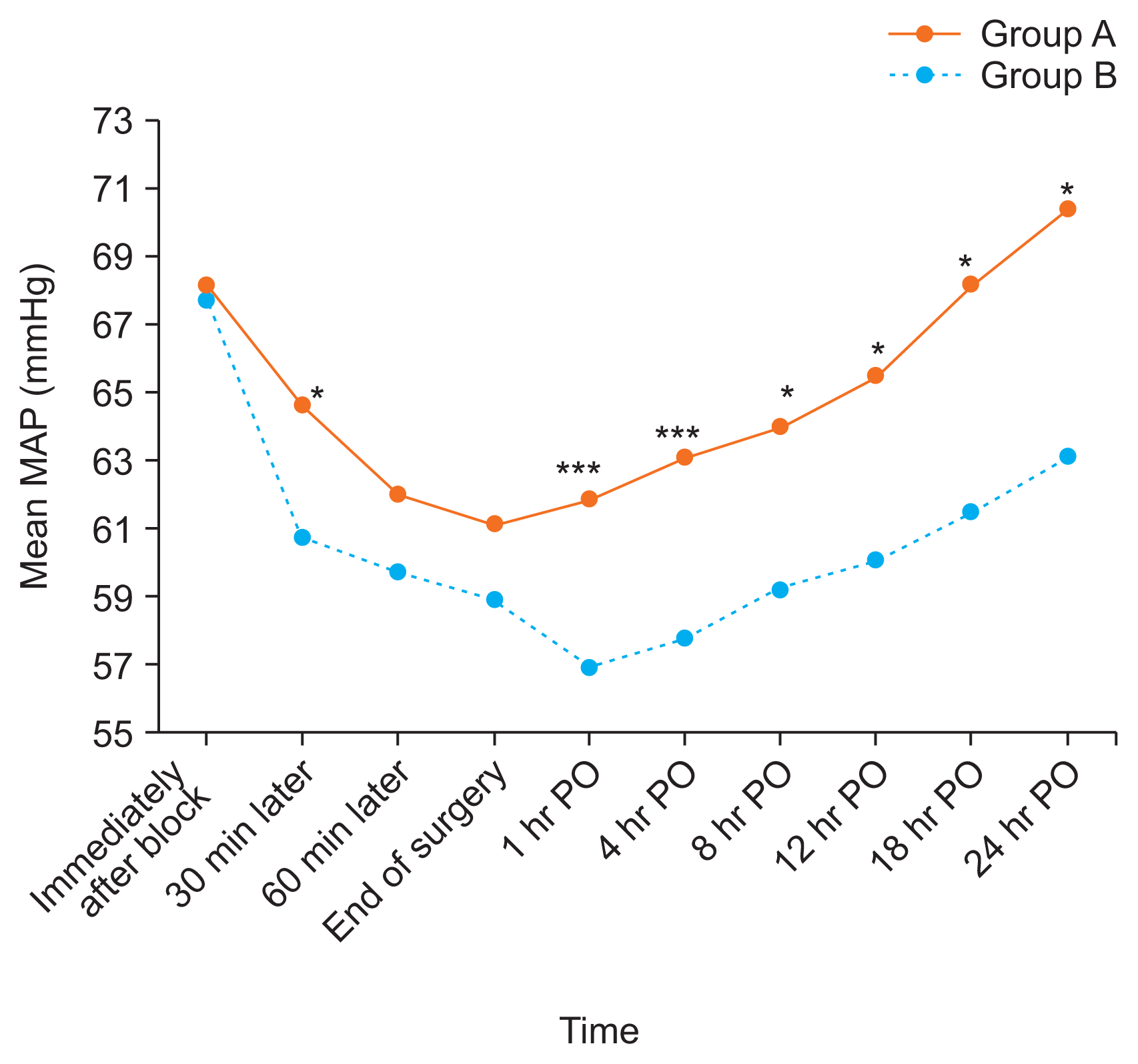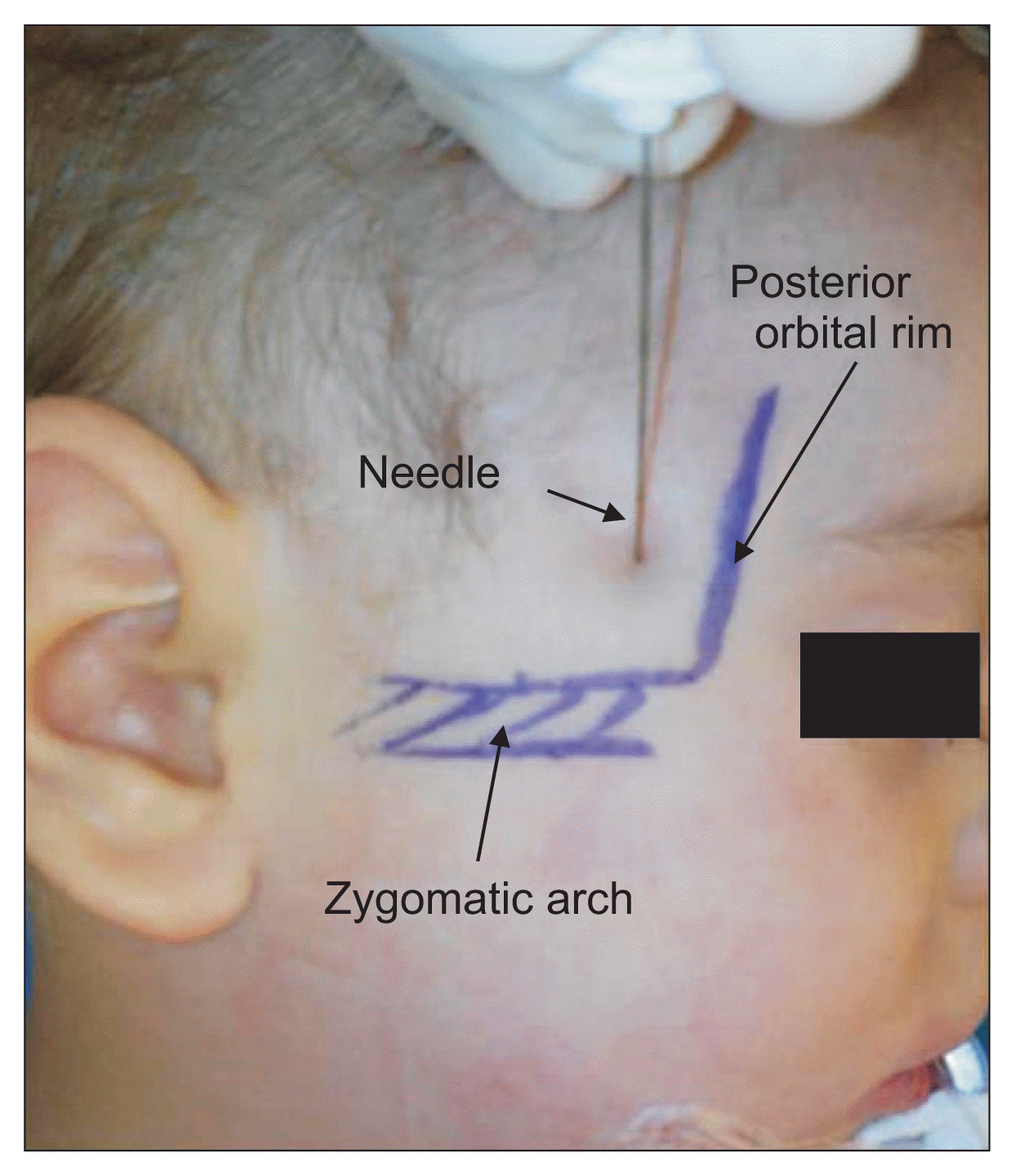2. Takemura H, Yasumoto K, Toi T, Hosoyamada A. Correlation of cleft type with incidence of perioperative respiratory complications in infants with cleft lip and palate. Paediatr Anaesth. 2002; 12:585–8. DOI:
10.1046/j.1460-9592.2002.00906.x. PMID:
12358652.

3. Chiono J, Raux O, Bringuier S, Sola C, Bigorre M, Capdevila X, et al. Bilateral suprazygomatic maxillary nerve block for cleft palate repair in children: a prospective, randomized, double-blind study versus placebo. Anesthesiology. 2014; 120:1362–9. DOI:
10.1097/ALN.0000000000000171. PMID:
24525630.
6. Singh B, Srivastava SK, Dang R. Anatomic considerations in relation to the maxillary nerve block. Reg Anesth Pain Med. 2001; 26:507–11. DOI:
10.1053/rapm.2001.26218. PMID:
11707787.

7. Captier G, Dadure C, Leboucq N, Sagintaah M, Canaud N. Anatomic study using three-dimensional computed tomographic scan measurement for truncal maxillary nerve blocks via the suprazygomatic route in infants. J Craniofac Surg. 2009; 20:224–8. DOI:
10.1097/SCS.0b013e318191d067. PMID:
19165032.

8. Mesnil M, Dadure C, Captier G, Raux O, Rochette A, Canaud N, et al. A new approach for peri-operative analgesia of cleft palate repair in infants: the bilateral suprazygomatic maxillary nerve block. Paediatr Anaesth. 2010; 20:343–9. DOI:
10.1111/j.1460-9592.2010.03262.x. PMID:
20199610.

9. Prigge L, van Schoor AN, Bosman MC, Bosenberg AT. Clinical anatomy of the maxillary nerve block in pediatric patients. Paediatr Anaesth. 2014; 24:1120–6. DOI:
10.1111/pan.12480. PMID:
25040918.

10. Lee MJ, Koo DJ, Choi YS, Lee KC, Kim HY. Dexamethasone or dexmedetomidine as local anesthetic adjuvants for ultrasound-guided axillary brachial plexus blocks with nerve stimulation. Korean J Pain. 2016; 29:29–33. DOI:
10.3344/kjp.2016.29.1.29. PMID:
26839668. PMCID:
4731548.

11. Marhofer P, Harrop-Griffiths W, Kettner SC, Kirchmair L. Fifteen years of ultrasound guidance in regional anaesthesia: part 1. Br J Anaesth. 2010; 104:538–46. DOI:
10.1093/bja/aeq069. PMID:
20364022.

12. Faul F, Erdfelder E, Lang AG, Buchner A. G*Power 3: a flexible statistical power analysis program for the social, behavioral, and biomedical sciences. Behav Res Methods. 2007; 39:175–91. DOI:
10.3758/BF03193146. PMID:
17695343.

13. Splinter WM, Semelhago LC, Chou S. The reliability and validity of a modified CHEOPS pain score. Anesth Analg. 1994; 78:S413.
14. Culebras X, Van Gessel E, Hoffmeyer P, Gamulin Z. Clonidine combined with a long acting local anesthetic does not prolong postoperative analgesia after brachial plexus block but does induce hemodynamic changes. Anesth Analg. 2001; 92:199–204. DOI:
10.1097/00000539-200101000-00038. PMID:
11133627.

16. Kulkarni KR, Patil MR, Shirke AM, Jadhav SB. Perioperative respiratory complications in cleft lip and palate repairs: an audit of 1000 cases under ‘Smile Train Project’. Indian J Anaesth. 2013; 57:562–8. DOI:
10.4103/0019-5049.123328. PMID:
24403615. PMCID:
3883390.

17. Law RC, de Klerk C. Anaesthesia for cleft lip and palate surgery. Updates in Anesthesia. 2002; 14:27–30.
18. Desalu I, Adeyemo W, Akintimoye M, Adepoju A. Airway and respiratory complications in children undergoing cleft lip and palate repair. Ghana Med J. 2010; 44:16–20. DOI:
10.4314/gmj.v44i1.68851. PMID:
21326986. PMCID:
2956308.

19. Reena , Bandyopadhyay KH, Paul A. Postoperative analgesia for cleft lip and palate repair in children. J Anaesthesiol Clin Pharmacol. 2016; 32:5–11. DOI:
10.4103/0970-9185.175649. PMID:
27006533. PMCID:
4784214.

20. Abdallah FW, Brull R. Facilitatory effects of perineural dexmedetomidine on neuraxial and peripheral nerve block: a systematic review and meta-analysis. Br J Anaesth. 2013; 110:915–25. DOI:
10.1093/bja/aet066. PMID:
23587874.

22. Almarakbi WA, Kaki AM. Addition of dexmedetomidine to bupivacaine in transversus abdominis plane block potentiates post-operative pain relief among abdominal hysterectomy patients: a prospective randomized controlled trial. Saudi J Anaesth. 2014; 8:161–6. DOI:
10.4103/1658-354X.130683. PMID:
24843325. PMCID:
4024669.

23. Vorobeichik L, Brull R, Abdallah FW. Evidence basis for using perineural dexmedetomidine to enhance the quality of brachial plexus nerve blocks: a systematic review and meta-analysis of randomized controlled trials. Br J Anaesth. 2017; 118:167–81. DOI:
10.1093/bja/aew411. PMID:
28100520.

24. Song JH, Shim HY, Lee TJ, Jung JK, Cha YD, Lee DI, et al. Comparison of dexmedetomidine and epinephrine as an adjuvant to 1% mepivacaine in brachial plexus block. Korean J Anesthesiol. 2014; 66:283–9. DOI:
10.4097/kjae.2014.66.4.283. PMID:
24851163. PMCID:
4028555.

25. Jonnavithula N, Durga P, Madduri V, Ramachandran G, Nuvvula R, Srikanth R, et al. Efficacy of palatal block for analgesia following palatoplasty in children with cleft palate. Paediatr Anaesth. 2010; 20:727–33. DOI:
10.1111/j.1460-9592.2010.03347.x. PMID:
20670236.

26. Sola C, Raux O, Savath L, Macq C, Capdevila X, Dadure C. Ultrasound guidance characteristics and efficiency of suprazygomatic maxillary nerve blocks in infants: a descriptive prospective study. Paediatr Anaesth. 2012; 22:841–6. DOI:
10.1111/j.1460-9592.2012.03861.x. PMID:
22587691.

27. Kamath MR, Mehandale SG, Us R. Comparative study of greater palatine nerve block and intravenous pethidine for postoperative analgesia in children undergoing palatoplasty. Indian J Anaesth. 2009; 53:654–61. PMID:
20640092. PMCID:
2900074.
28. Obayah GM, Refaie A, Aboushanab O, Ibraheem N, Abdelazees M. Addition of dexmedetomidine to bupivacaine for greater palatine nerve block prolongs postoperative analgesia after cleft palate repair. Eur J Anaesthesiol. 2010; 27:280–4. DOI:
10.1097/EJA.0b013e3283347c15. PMID:
19935071.

29. Mostafa MF, Herdan R, Elshazly M. Comparative study of levobupivacaine and bupivacaine for bilateral maxillary nerve block during pediatric primary cleft palate surgery: a randomized double-blind controlled study. Korean J Anesthesiol. 2018; 71:135–40. DOI:
10.4097/kjae.2018.71.2.135. PMID:
29619786. PMCID:
5903109.

30. Ahmed SA, Elmawy MG, Magdy AA. Effect of the use of dexmedetomidine as an adjuvant in peribulbar anesthesia in patients presented for vitreoretinal surgeries. Egypt J Anaesth. 2018; 34:27–32. DOI:
10.1016/j.egja.2017.10.001.

31. Anand VG, Kannan M, Thavamani A, Bridgit MJ. Effects of dexmedetomidine added to caudal ropivacaine in paediatric lower abdominal surgeries. Indian J Anaesth. 2011; 55:340–6. DOI:
10.4103/0019-5049.84835. PMID:
22013248. PMCID:
3190506.

32. Wu HH, Wang HT, Jin JJ, Cui GB, Zhou KC, Chen Y, et al. Does dexmedetomidine as a neuraxial adjuvant facilitate better anesthesia and analgesia? A systematic review and meta-analysis. PLoS One. 2014; 9:e93114. DOI:
10.1371/journal.pone.0093114. PMID:
24671181. PMCID:
3966844.

33. Fritsch G, Danninger T, Allerberger K, Tsodikov A, Felder TK, Kapeller M, et al. Dexmedetomidine added to ropivacaine extends the duration of interscalene brachial plexus blocks for elective shoulder surgery when compared with ropivacaine alone: a single-center, prospective, triple-blind, randomized controlled trial. Reg Anesth Pain Med. 2014; 39:37–47. DOI:
10.1097/AAP.0000000000000033. PMID:
24317234.

34. Kim KH. Safe sedation and hypnosis using dexmedetomidine for minimally invasive spine surgery in a prone position. Korean J Pain. 2014; 27:313–20. DOI:
10.3344/kjp.2014.27.4.313. PMID:
25317279. PMCID:
4196495.








 PDF
PDF Citation
Citation Print
Print



 XML Download
XML Download